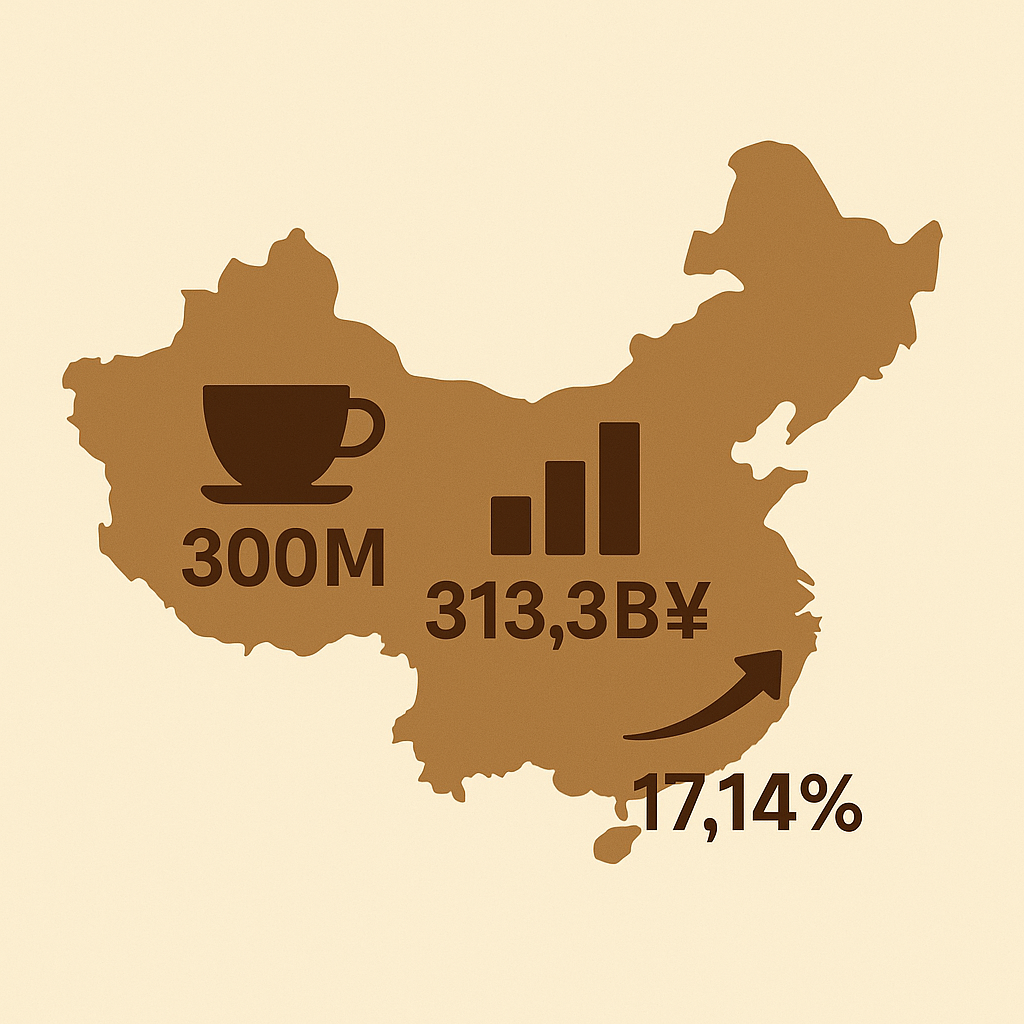In recent years, with the improvement of people’s consumption level, the scale of domestic coffee consumers has exceeded 300 million, and the Chinese coffee market has grown rapidly. According to industry forecasts, the scale of China’s coffee industry will increase to 313.3 billion yuan in 2024, with a compound growth rate of 17.14% in the past three years. The Chinese coffee market research report released by the International Coffee Organization (ICO) also pointed out the bright future of China’s coffee industry.

Coffee is mainly divided into two categories according to consumption forms: instant coffee and freshly brewed coffee. At present, instant coffee and freshly brewed coffee account for about 60% of the Chinese coffee market, and freshly brewed coffee accounts for about 40%. Due to the penetration of coffee culture and the improvement of people’s income level, people are pursuing a high-quality life and paying more and more attention to the quality and taste of coffee. The scale of the freshly brewed coffee market is growing rapidly, which has promoted the consumption of high-quality coffee beans and the demand for import trade.
1. Global coffee bean production
In recent years, global coffee bean production has continued to rise. According to the Food and Agriculture Organization of the United Nations (FAO), global coffee bean production will reach 10.891 million tons in 2022, a year-on-year increase of 2.7%. According to the World Coffee Organization ICO, global coffee production in the 2022-2023 season will increase by 0.1% year-on-year to 168 million bags, equivalent to 10.092 million tons; it is predicted that total coffee production in the 2023-2024 season will increase by 5.8% to 178 million bags, equivalent to 10.68 million tons.
Coffee is a tropical crop, and its global planting area is mainly distributed in Latin America, Africa and Southeast Asia. According to statistics from the Food and Agriculture Organization of the United Nations, the total area of coffee cultivation in the world in 2022 is 12.239 million hectares, a year-on-year decrease of 3.2%. Global coffee varieties can be botanically divided into Arabica coffee and Robusta coffee. The two types of coffee beans have unique flavor characteristics and are often used to produce different products. In terms of production, in 2022-2023, the global total production of Arabica coffee will be 9.4 million bags (about 5.64 million tons), a year-on-year increase of 1.8%, accounting for 56% of the total coffee production; the total production of Robusta coffee will be 7.42 million bags (about 4.45 million tons), a year-on-year decrease of 2%, accounting for 44% of the total coffee production.
In 2022, there will be 16 countries with coffee bean production exceeding 100,000 tons, accounting for 91.9% of the global coffee production. Among them, 7 countries in Latin America (Brazil, Colombia, Peru, Honduras, Guatemala, Mexico and Nicaragua) account for 47.14% of the global production; 5 countries in Asia (Vietnam, Indonesia, India, Laos and China) account for 31.2% of the global coffee production; 4 countries in Africa (Ethiopia, Uganda, Central African Republic and Guinea) account for 13.5% of the global coffee production.
2. China’s coffee bean production
According to the United Nations Food and Agriculture Organization, China’s coffee bean production in 2022 will be 109,000 tons, with a 10-year compound growth rate of 1.2%, accounting for 1% of the global total production, ranking 15th in the world. According to estimates by the World Coffee Organization ICO, China’s coffee planting area exceeds 80,000 hectares, with an annual output of more than 2.42 million bags. The main production areas are concentrated in Yunnan Province, accounting for about 95% of China’s annual total production. The remaining 5% comes from Hainan, Fujian and Sichuan.
According to data from the Yunnan Provincial Department of Agriculture and Rural Development, by 2022, the coffee planting area in Yunnan will reach 1.3 million mu, and the coffee bean output will be about 110,000 tons. In 2021, the output value of the entire coffee industry chain in Yunnan was 31.67 billion yuan, a year-on-year increase of 1.7%, of which the agricultural output value was 2.64 billion yuan, the processing output value was 17.36 billion yuan, and the wholesale and retail added value was 11.67 billion yuan.
3. International trade and consumption of coffee beans
According to the forecast of the Food and Agriculture Organization of the United Nations (FAO), the global export trade volume of green coffee beans in 2022 will be 7.821 million tons, a year-on-year decrease of 0.36%; and according to the forecast of the World Coffee Organization (WCO), the total export trade volume of green coffee beans in 2023 will drop to about 7.7 million tons.
In terms of exports, Brazil is the world’s largest exporter of green coffee beans. According to the United Nations Food and Agriculture Organization, the export volume in 2022 was 2.132 million tons, accounting for 27.3% of the global export trade volume (the same below); Vietnam ranked second with an export volume of 1.314 million tons, accounting for 16.8%; Colombia ranked third with an export volume of 630,000 tons, accounting for 8.1%. In 2022, China exported 45,000 tons of green coffee beans, ranking 22nd among countries and regions in the world. According to Chinese Customs statistics, China exported 16,000 tons of coffee beans in 2023, a decrease of 62.2% from 2022; China exported 23,000 tons of coffee beans from January to June 2024, an increase of 133.3% over the same period in 2023.
Post time: Jul-25-2025






